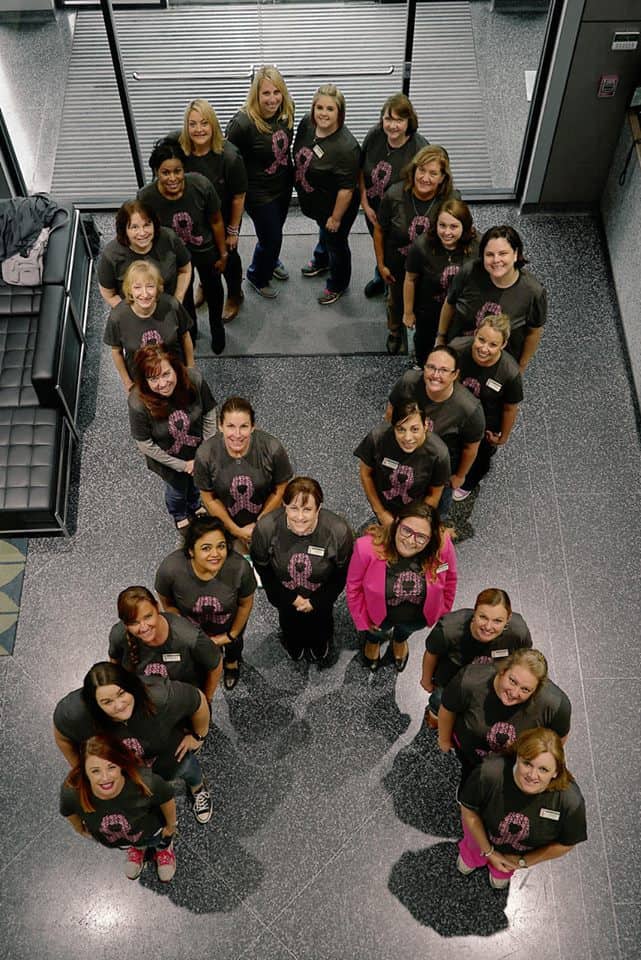When normal body cells replace themselves for routine body maintenance and repair, they “know” when to stop dividing. Cancer cells do not. Cancer is uncontrolled growth of abnormal cells, which can potentially spread to other parts of the body.
Since breast cancer is the most commonly diagnosed cancer in U.S. women (220,000+ each year) The second leading cause of death in U.S. women (40,000+ each year) and each year approximately 2,150 U.S. men will be diagnosed with and 410 will die of breast cancer every year, every month should be breast cancer awareness month.
Risk Factors Associated with Breast Cancer
Most people who get breast cancer will never know the exact reason why. Cancer is caused when a cell’s DNA is damaged by genetic or environmental factors; in most cases, it is a combination of both.
The two most important risk factors for breast cancer are gender (female) and aging.
Genetic Factors (most are not controllable)
- Gender – women are almost 100 times more at risk than men
- Age – 66% of women with invasive cancer are diagnosed after age 55
- Race – non-Hispanic white women are diagnosed more often than women of other races
- Family History and Genetic Factors
- higher risk if a first degree relative (mother, sister, father, child) has been diagnosed with breast or ovarian cancer
- the risk increases if your relative was diagnosed before the age of 50
- 3-4 times higher risk in women if more than one first-degree relative was diagnosed
- Personal Health History – if diagnosed in one breast, there is twice the risk of being diagnosed in the other
- Menstrual and Reproductive History
- menstruation before age 12-14 increases the risk up to 30%
- menopause after age 55 increases the risk to 50%
- delivering first child after 30 years old doubles the risk
- never giving birth doubles the risk
- breastfeeding for less than 6 months increases the risk
- Genetic Changes – BRCA1 / BRCA2 (breast cancer genes) increase risk 5–10%; children have 50% chance of inheriting the genes
- Dense Breast Tissue – can increase the risk and makes lumps harder to detect
Environmental and Lifestyle Risk Factors (controllable)
- Being Overweight or Obese – #1 risk; risk increases if overweight after menopause
- Drinking Alcohol – the more alcohol consumed, the greater the risk (7-12%)
- Lack of Physical Activity – physical activity decreases the risk 10-20%
- Poor Diet – a diet high in saturated fat and lacking fruits and vegetables increases the risk
- Radiation to the Chest – having radiation therapy to the chest before the age of 30 increases your risk
- Hormone Replacement Therapy (HRT) – increases the risk and decreases chance of detecting early
- Smoking – 12% higher risk than women who never smoked; may be higher if began before birth of first child
- Stress – releases cortisol: suppresses the immune system’s Natural Killer cells – the main cancer-fighting cells
Being overweight, drinking alcohol and being inactive increases the risk of breast cancer 21%. 60-70% of people with breast cancer will have none of these risk factors; others with risk factors will never develop breast cancer.
Underwire bras, implants, deodorant, mammograms, caffeine, plastic ware, microwaves or cell phones do not cause breast cancer. Breast cancer is not contagious.
When breast cancer is detected early, the 5-year survival rate is 98%. Check back for Part 2 of our Breast Cancer Awareness series discussing early detection studies and practices.










1 thought on “Breast Cancer Awareness Part 1 | Risk Factors Associated with Breast Cancer”